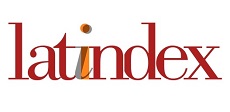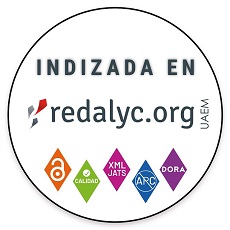COVID-19: Pandemic in Ecuador: a health disparities perspective
COVID-19: pandemia en Ecuador desde una perspectiva de las disparidades de salud
DOI:
https://doi.org/10.15446/rsap.v22n3.88102Palabras clave:
Covid-19 , volcanic ash, vulnerabilities, second wave of infection (en)COVID-19 , ceniza volcánica, poblaciones vulnerables (es)
Descargas
The global COVID-19 pandemic initiated in Ecuador with the patient zero in February 2020 and since more than 40,000 persons have been tested positive to the virus, leaving some 3,500 deceased, while approximately about 10,500 persons above annual average numbers died within March to May. A strict lockdown was applied by mid-March, which resulted to a severe economic crisis in the country. Although during the lockdown occurred a notable decrease in the number of new cases, the spread of the infection was already massive, untechnical, political and economic decisions will certainly lead to continuous wave of infections for months.
Objective Our study postulates, that persons who are most likely to be infected during such secondary wave will be people who have already health issues to which we count besides the known ones, especially those who are already suffer by the distribution of volcanic ashes, as such pyroclastic material is known to affect lunges and thyroids.
Methods A descriptive ecological study of information related to COVID-19 infection at a national level using official data from the Minister of Public Health and volcanic ash fall by geographical area in Ecuador.
Results The mortality rate per canton indicated that those with lower attack rates are the ones with highest mortality rate. For instance, Portovelo (21.3/100,000), Playas (18.4/100,000), Santa Rosa (15.8/100,000), Suscal (15.3/100,000) and Penipe (14.3/100,000) reported the highest mortality rate per 100,000 people. The main distribution of such volcanic material is within the central to northern area of the Highlands and Inter-Andean Valley of Ecuador, due to the analysis of some 7394 satellite images of the last 21 years.
Conclusions We conclude that areas with high vulnerabilities are also most susceptible to develop COVID-19. Such areas with their respective populations will be affected above average and shall be protected in particular within the presently starting during possible second wave of infection.
La pandemia de COVID-19 inició en Ecuador en febrero de 2020. Desde el inicio más de 40 000 personas han sido oficialmente diagnosticadas con el virus, que ha dejado al menos 3 500 fallecidas, mientras que aproximadamente unas 10 500 personas por encima del promedio anual murieron entre marzo y mayo de 2020. A mediados de marzo se aplicó el confinamiento absoluto en el país, lo que provocó una grave crisis económica y social en Ecuador. Aunque el bloqueo produjo una reducción en el número de casos, la infección estaba propagada ya entre la comunidad y los diagnósticos aumentaron notable debido a decisiones políticas y económicas, que, sin lugar a duda, conducirán a oleadas posteriores de infección por incluso meses.
Objetivo Nuestro estudio postula que las personas que tienen más probabilidades de infectarse durante dicha ola secundaria serán las personas que ya tengan problemas de salud. A la vez, proponemos que aquellos pobladores que ya están sufriendo por la caída de cenizas volcánicas y flujos piroclásticos pueden tener más riesgo tal como lo describimos en casos relacionados con cáncer de tiroides y ceniza.
Métodos Es un estudio ecológico descriptivo de la información relacionada con la infección por COVID-19 a nivel nacional, utilizando datos oficiales de contagio del Ministerio de Salud Pública y caída de cenizas volcánicas por área geográfica en Ecuador.
Resultados La tasa de mortalidad por cantón indicó que aquellos con tasas de ataque más bajas son los que tienen la tasa de mortalidad más alta. Por ejemplo, Portovelo (21,3/100.000), Playas (18,4/100.000), Santa Rosa (15,8/100 000), Suscal (15,3/100 000) y Penipe (14,3/100 000) registraron la tasa de mortalidad más alta por cada 100 000 personas. La principal distribución de dicho material volcánico se encuentra dentro de la zona centro-norte de la Sierra y Valle Interandino del Ecuador, debido al análisis de unas 7 394 imágenes satelitales de los últimos 21 años.
Conclusiones Concluimos que las áreas con alta vulnerabilidad también son más susceptibles a desarrollar COVID-19. Tales áreas con sus respectivas poblaciones se verán afectadas por encima de la media y estarán protegidas, en particular, dentro del inicio actual durante una posible segunda ola de infección.
Referencias
Adams ML, Katz DL, Grandpre J. Population-based estimates of chronic conditions affecting risk for complications from coronavirus disease, United States. Emerg Infect Dis. 2020; 26(8):1831-3. DOI:10.3201/eid2608.200679. DOI: https://doi.org/10.3201/eid2608.200679
Smieszek T, Lazzari G, Salathé M. Assessing the Dynamics and Control of Droplet- and Aerosol-Transmitted Influenza Using an Indoor Positioning System. Scientific reports. 2019; 9(1):2185. DOI:10.1038/s41598-019-38825-y. DOI: https://doi.org/10.1038/s41598-019-38825-y
Ortiz PE, Simbaña RK, Gomez BL, Rubio NM, Guaman LP, Kyriakidis N, Sanchez SH. Clinical, Molecular and Epidemiological Characterization of the SARS-CoV2 Virus and the Coronavirus Disease 2019 (COVID-19): A Comprehensive Literature Review. 2020. DOI:10.1016/j.diagmicrobio.2020.115094. DOI: https://doi.org/10.1016/j.diagmicrobio.2020.115094
Heuveline P, Tzen M. Three CoViD-19 Mortality Indicators for Temporal and International Comparisons. medRxiv. 2020. DOI:10.1101/2020.04.29.20085506. DOI: https://doi.org/10.1101/2020.04.29.20085506
Russo M, Malandrino P, Addario WP, Dardanoni G, Vigneri P, Pellegriti G, Vigneri R. Several site-specific cancers are increased in the volcanic area in Sicily. Anticancer research. 2015; 35(7):3995-4001.
Sierra MS, Soerjomataram I, Forman D. Thyroid cancer burden in Central and South America. Cancer epidemiology. 2016; 44:S150-S157. DOI:10.1016/j.canep.2016.07.017.
Salazar VJ, Ortiz PE, Solis PP, Gómez BL, Simbaña RK, Henriquez TR, Coral AM. Thyroid Cancer in Ecuador, a 16 years population-based analysis (2001–2016). BMC cancer, 2019; 19(1):294. DOI:10.1016/j.canep.2016.07.017. DOI: https://doi.org/10.1016/j.canep.2016.07.017
Bourne AJ, Abbott PM, Albert PG, Cook E, Pearce NJ, Ponomareva V, Davies SM. Underestimated risks of recurrent long-range ash dispersal from northern Pacific Arc volcanoes. Scientific reports. 2016; 6(1):1-8. DOI:10.1038/srep29837.
Yano E, Yokoyama Y, Nishii S. Chronic pulmonary effects of volcanic ash: an epidemiologic study. Archives of Environmental Health: An International Journal. 1986; 41(2):94-99. DOI:10.1038/srep29837. DOI: https://doi.org/10.1038/srep29837
Gudmundsson G. Respiratory health effects of volcanic ash with special reference to Iceland. A review. The clinical respiratory journal. 2011; 5(1):2 9. DOI:10.1111/j.1752-699X.2010.00231.x. DOI: https://doi.org/10.1111/j.1752-699X.2010.00231.x
Vigneri R, Malandrino P, Giani F, Russo M, Vigneri P. Heavy metals in the volcanic environment and thyroid cancer. Molecular and cellular endocrinology. 2017; 457:73-80. DOI:10.1016/j.mce.2016.10.027. DOI: https://doi.org/10.1016/j.mce.2016.10.027
Nettore I C, Colao A, Macchia PE. Nutritional and environmental factors in thyroid carcinogenesis. Int J Environ Res Public Health. 2018; 15(8):1735. DOI:10.3390/ijerph15081735. DOI: https://doi.org/10.3390/ijerph15081735
Buist AS, Vollmer WM, Johnson LR, Bernstein RS, McCamant LE. A Four-Year Prospective Study of the Respiratory Effects of Volcanic Ash from Mount St. Helens. Am. Rev. Respir. Dis. 1986; 133:526-34. DOI:10.1164/arrd.1986.133.4.526.
Gutscher MA, Malavieille J, Lallemand S, Collot JY. Tectonic segmentation of the North Andean margin: impact of the Carnegie Ridge collision. Earth and Planetary Science Letters, 1999; 168(3-4):255-70. DOI:10.1016/S0012-821X(99)00060-6. DOI: https://doi.org/10.1016/S0012-821X(99)00060-6
Toulkeridis T, Zach I. Wind directions of volcanic ash-charged clouds in Ecuador – Implications for the public and flight safety. Geomatics, Natural Hazards and Risks, 2017; 8(2): 242-56. DOI: https://doi.org/10.1080/19475705.2016.1199445
Global Volcanism Program. Report on Reventador (Ecuador). In: Sennert, S.K. (ed.), Weekley Volcanic Activity Report. 22 April-28 April 2020. Smithsonian Institution and US Geological Survey.
Global Volcanism Program. Report on Sangay (Ecuador). In: Sennert, S.K. (ed.), Weekley Volcanic Activity Report. 1 April-7 April 2020. Smithsonian Institution and US Geological Survey.
Vaca AV, Arroyo CR, Debut A, Toulkeridis T, Cumbal L, Mato F, Aguilera E. Characterization of Fine-grained Material Ejected by the Cotopaxi Volcano Employing X-ray Diffraction and Electron Diffraction Scattering Techniques. Biology and Medicine. 2016; 8(3)1. DOI:10.4172/0974-8369.1000280. DOI: https://doi.org/10.4172/0974-8369.1000280
Aguilera C, Viteri M, Seqqat R, Ayala Navarrette L, Toulkeridis T, Ruano A, Torres Arias M. Biological Impact of Exposure to Extremely Fine-Grained Volcanic Ash. Journal of Nanotechnology, 2018. DOI:10.1155/2018/7543859. DOI: https://doi.org/10.1155/2018/7543859
Friedman E, Friedman J, Johnson S, Landsberg A. Transitioning out of the coronavirus lockdown: A framework for zone-based social distancing. ArXiv. 2020. preprint arXiv:2004.08504. DOI: https://doi.org/10.3389/fpubh.2020.00266
Toulkeridis T, Chunga K, Rentería W, Rodriguez F, Mato F, Nikolaou S, et al. The 7.8 Mw Earthquake and Tsunami of the 16th April 2016 in Ecuador-Seismic evaluation, geological field survey and economic implications. Science of tsunami hazards. 36:197-242.
Wolff J. Ecuador after Correa: the Struggle over the “Citizens’ Revolution”. Revista de Ciencia Política. 38(2), 281-302. DOI:10.4067/s0718-090x2018000200281. DOI: https://doi.org/10.4067/s0718-090x2018000200281
González-Jaramillo V, González-Jaramillo N, Gómez-Restrepo C, Palacio-Acosta CA, Gómez-López A, Franco OH. Proyecciones de impacto de la pandemia COVID-19 en la población colombiana, según medidas de mitigación. Datos preliminares de modelos epidemiológicos para el periodo del 18 de marzo al 18 de abril de 2020. Rev. Salud Pública. 2020; 22(2).1-6: 10.15446/rsap.V22n2.85789. DOI: https://doi.org/10.15446/rsap.v22n2.85789
Manrique-Abril FG, Agudelo-Calderon CA, González-Chordá VM, Gutiérrez-Lesmes O, Téllez-Piñerez CF, Herrera-Amaya G. SIR model of the COVID-19 pandemic in Colombia. Rev. Salud Pública (Bogotá) 22(2):1-9. 10.15446/rsap.V22n2.85977. DOI: https://doi.org/10.15446/rsap.v22n2.85977
Cómo citar
APA
ACM
ACS
ABNT
Chicago
Harvard
IEEE
MLA
Turabian
Vancouver
Descargar cita
CrossRef Cited-by
1. Oswaldo Padilla Almeida, Theofilos Toulkeridis, Joaquín Bosque Sendra. (2022). Doctoral Symposium on Information and Communication Technologies - DSICT. Lecture Notes in Electrical Engineering. 846, p.74. https://doi.org/10.1007/978-3-030-93718-8_7.
2. Yolanda Moreno-Guamán, William Tigse-Bravo, Theofilos Toulkeridis. (2025). Developments and Advances in Defense and Security. Smart Innovation, Systems and Technologies. 423, p.43. https://doi.org/10.1007/978-981-96-0235-3_4.
Dimensions
PlumX
Visitas a la página del resumen del artículo
Descargas
Licencia
Derechos de autor 2020 Revista de Salud Pública

Esta obra está bajo una licencia internacional Creative Commons Atribución 4.0.
Esta revista provee acceso libre inmediato a su contenido bajo el principio de que hacer disponible gratuitamente investigación al publico apoya a un mayor intercambio de conocimiento global.
Todos los contenidos de esta revista, excepto dónde está identificado, están publicados bajo una Licencia Creative Commons Atribución 4.0.





















